Karera
* * *
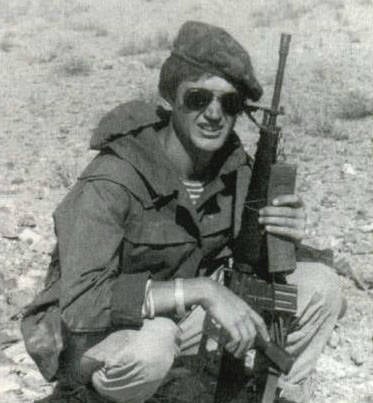 The fortified area of Karera was equipped by the Afghan armed opposition at the beginning of the 1980-s, twenty kilometers south of the administrative center of Kunar province of Asadabad at the junction of the borders of Afghanistan and Pakistan. According to available intelligence, the fortified garrison numbered 80 - 100 militants belonging to the Islamic Union for the Liberation of Afghanistan Party (ISOA), one of the seven most implacable opposition parties in the Kabul government. It housed a fortified area in highland (height about 2000 meters), the northern slopes and valleys of the gorges of which were covered with evergreen shrubs and forests, occupying the territory of Afghanistan and Pakistan. The main battle formations of the fortified area were strongholds, warning guard posts, equipped in engineering terms, located on the tops and ridges of mountain ranges, connected by a single system of fire, radio and telephone communications.
The fortified area of Karera was equipped by the Afghan armed opposition at the beginning of the 1980-s, twenty kilometers south of the administrative center of Kunar province of Asadabad at the junction of the borders of Afghanistan and Pakistan. According to available intelligence, the fortified garrison numbered 80 - 100 militants belonging to the Islamic Union for the Liberation of Afghanistan Party (ISOA), one of the seven most implacable opposition parties in the Kabul government. It housed a fortified area in highland (height about 2000 meters), the northern slopes and valleys of the gorges of which were covered with evergreen shrubs and forests, occupying the territory of Afghanistan and Pakistan. The main battle formations of the fortified area were strongholds, warning guard posts, equipped in engineering terms, located on the tops and ridges of mountain ranges, connected by a single system of fire, radio and telephone communications.One of these fortified base areas in the north-west of Nangahar-Goshta province was captured and completely destroyed by GRU special forces units in January 1986. The operation to capture it was so successful that we managed, virtually without loss, to destroy around the 60 rebels, all the ammunition and equipment depots, capture three 14,5-mm anti-aircraft anti-aircraft guns, seven 1-mm DShK machine guns, one 12,7 anti-aircraft guns -mm BO-82 recoilless rifle, three 82-mm mortars (all weapon Chinese-made) and over thirty small arms, including the American 7,62-mm M-21 sniper rifle, very rare in Afghanistan, as well as one Strela-2 MANPADS.
After such a dizzying success, the command of the 15-th separate special-purpose brigade, which organizationally included several separate special forces detachments (OOSNP), decided to capture and destroy during the raid on the fortified base area "Karera".
* * *
According to the decision of the brigade commander, the raid was carried out by two separate detachments (battalions) with fire support from the attached artillery battery 122-mm D-30 howitzers and a fire platoon of the MLRS BM-21 Grad.
The main plan of the operation consisted in stealthy withdrawal of two road units (100 and 500 OOSN) in separate directions with the task of blocking and destroying the Mojahideen strongholds by dawn of 29 in March 1986, followed by the seizure of the warehouse zone and further evacuation of the troops with captured trophies, transport and combat helicopters. The special operation was planned to be carried out in less than a day, including the time for the nomination from the point of permanent deployment. Units recruited for the operation, having completed a ninety-kilometer march on armored vehicles, on March 28 arrived in 20.00 to their home districts and, after dusk, crossed the river. Kunar on the cable ferry by the shuttle method and overcoming the KhAD (MGB of Afghanistan) with the help of local soldiers and no one knew when the anti-personnel minefield established, began advancing to the border ridge, bypassing the fortified area on the right.
The 500 squad, covering the enemy on the left, on the southern slopes of the Spinatsuk ridge (the northern slopes of the ridge are not impassable without special equipment), closer to midnight was stopped by large-caliber machine-gun fire from the standpoint of the Mumundum stronghold (hereinafter the OP names are conditional), where intelligence, there was only a small guard post. Before dawn there was no more than an hour, when the 100 squad in the number of 126 people, wading through the thickets of bushes and rubbing their nails painfully, climbing the rocks, crossed the 16 - 17 km of highland, went to the Afghan-Pakistan section specified during the formulation of the combat mission boundaries. From here, the entire base area was clearly visible, including the DShK positions in the Mamunda stronghold, firing at the 500 squad with tracer bullets.
Anticipating the question of why the firing points of the Mujahideen have not been suppressed so far, I will answer: open artillery fire, the whole fortified area would stand on your ears and there could be no concealment and surprise in the actions of even the 100 group. Without getting involved in a firefight, the 500 squad managed, without suffering losses, to gain a foothold under enemy fire on the western and southern spurs of the Spinnatsuk ridge and even to go one kilometer ahead, despite the fire resistance from the ridge itself.
After a brief clarification of tasks, the commander of the 100 squad between him and the commander of the 1 company arose a small dispute due to the order of upcoming actions, since the delay of the 500 squad made significant changes in the balance of forces. Now, our squad had to not only block a section of the state border with a length of about four kilometers, but also capture at least two enemy strongholds - Mamundu and Main, located at a height marked 2180. Despite the persistent advice of the commander 1 of the company of captain Oleg M. “not to disperse the forces” of an already not large detachment (less than 50% of the staff), the battalion commander decided to act in three separate directions with the tasks:
- 1-th company in the number of 26 people to take up defense in the height area with the 2182 mark with the task: not to allow the enemy to retreat to Pakistan and approach from there his reserves;
- 2-th company with a detachment control group (about 40 people in total) to capture the “Main” reference point;
- 3-th company to seize the Mamund stronghold and, if necessary, provide the output of the 500 detachment to the border ridge with fire.
At the approach of the 1 company to the height of 2182, the gunners unknown on whose instructions they began to target the planned targets, and we were covered with 122-mm incendiary-smoke (sighting) projectile a hundred meters from the specified height. Nobody was injured from a projectile that exploded twenty meters away, but after a few seconds from the “our” roller coaster, an Afghani’s alarming cry amplified, which we didn’t expect and were surprised more than ruptured a projectile. The company commander, summoning me to him, set the task to take the neighboring height of the 2 group and be ready to support the assault of the 1 group of the Mujahideen positions with fire. Halfway to heights, we were joined by the Chief of Intelligence of the detachment, Lieutenant Vadim O., with four fighters as a reinforcement of my group (two with PKN machine guns).
Our movements under the very nose of the "spirits" were hidden by the predawn darkness and light fog. The 1 group took the starting line for the assault in 40 - 50 meters from the enemy. Our two groups separated 200 - 250 meters, but thanks to this placement the enemy fell into crossfire. My group, dispersed in pairs, occupied the all-round defense, and three-quarters of the personnel had the opportunity to fire towards Pakistan. With the height occupied by the 2 group, all approaches to the fortified area could be viewed to a depth of several kilometers.
Having checked with a ramrod, whether the machine-gun structure (SPS) equipped by someone at the height of the summit was mined, I set up my command and observation post in it, where the sniper and medical orderly were with me.
Despite all our efforts, the Mujahideen most likely calculated our maneuvers and, having heard the cannonade of storming the Mamunda stronghold, began to retreat to Pakistan, imperceptibly bypassing the 1 group, but were stopped by fire from my side and sat down behind boulders in a crevice. I called the 1 group on the radio station and asked them to process the “spirits” with GP-25 grenade launchers (mine didn’t reach me - the range is more than 400 meters). Having indicated the azimuth and range to the target, I waited for about a minute for the results of the fire in readiness to correct it, since the enemy from the 1 group was not visible. Observing the exact rupture of the grenade launcher, I felt joy, but it lasted just as long as the RPG-7 grenade required to overcome the distance in 450 meters ... The grenade exploded in 10 meters ahead of my ATP, but now I knew exactly where the grenade launcher sat down, I give to the group target designation tracer bullets. The "grenade launcher spirit" managed to make another shot in our direction, but made a big mistake, forgetting to change the firing position - my group swept it with concentrated fire.
The same fate befell several more people from the departing group, but still two or three militants managed to break into Pakistan, which was immediately reported to the head of the operation.
After making sure that the enemy left his stronghold, the 1 group had no choice but to inspect the abandoned positions, finding 12,7-mm DShK and 14,5-mm ZPU-1 ready for battle, and ammunition stored in the above-mentioned weapons in three caves with annexes , 107-mm missiles - PC and ... field telephone switchboard. After the 1 th company captured the communications center, not counting the telephone cables that had been cut during the extension, the enemy lost telephone communication between the strong points and the leadership of the base in Pakistan.
In the predawn twilight, the 3 Company during the fleeting attack stormed the Mamunda stronghold, destroying about fifteen insurgents, capturing two large-caliber DShK machine guns, one paired ZPU-2, 82-mm mortar, and a warehouse and a warehouse set. kishlak Mamund. Several Mujahideen contused in the dugout with a hand grenade rifle were captured. During the storming of the stronghold, one soldier of the 3 Company was killed.
The lack of dark time didn’t allow the 2 th company to capture the Main pivot point, so immediately after the detachment detachment, the company took up defensive positions on the border ridge in the area of the Gulpray pass, well below the height of the enemy’s 2180. is a gross error in the conduct of hostilities in the mountains ...
Summarizing the results of the first main stage of the operation, it should be noted that the task of the two units was completed almost completely (not counting the capture of the “Main” item) only by units of the 100 squad. During the early morning raid, 29 March destroyed around 20 rebels, captured two missile defense systems, three DShK, mortar, prisoners, and arsenals with ammunition and equipment - which was more than enough during the operation. After successful actions of the 1 and 3 of the 100 squad of the detachment, a relative lull ensues (the most unpleasant in operations of this kind). Conscientiously executing the team “Prepare for evacuation”, we “destroyed” the canned food, issued with the expectation of breakfast only, and waited for the 8.00 helicopters, hastily entrenched on the achieved lines.
My group, having built ATP lightweight systems, which are suitable except for a night ambush, rested after a night march, and on-duty observers viewed the territory of Pakistan with binoculars and telescopes. Hiding from the cold breeze at the bottom of the ATP, through a light slumber, I heard a dry click of a shot from Pakistan towards us, and then a moan of a wounded man. Wounded machine gunner Shagarova - need promedol, and syringe-tubes with painkillers just me. Having forgotten in a hurry about the medical order of the detachment lying next to me, I ask you to cover me with fire from neighboring SPS and run across two short dashes to the wounded man. I barely had time to fall behind the stone next to Shagarov, just as a sniper's bullet smacked a little behind me. Under enemy fire, I bandage a wound lying on its side, after cutting the uniform with a knife - the bullet entered just above the collarbone and came out, crushing the bones, through the scapula, fortunately without hitting the lungs and large blood vessels. Having spent two dressing packages (my own and the wounded one), I ask you to cover me up again with fire and come back, but because of the dense return fire - several machine gunners help the sniper - I lie in SPS Kononenkov and Buzy. Their ATPs are of high quality, but the “spirits” are beating purposefully, knocking down the top stones of the shelter with single shots, and we, returning fire, quickly dig in, wielding only with a knife and ramrod.
Under the cover of 2-3 fire snipers and several machine gunners, forcing us to weaken the observation of the battlefield, the enemy pulls forces and in small groups bypasses us from the flanks, in which he contributes to the dense bush and mountain forest, located between our positions and the Pakistani valley. After some time, groups of 8 and 15 Mujahideen appear along the entire valley and ridges of the ridges, running in a column one by one in our direction, but they are significantly hampered by artillery fire that we have caused and corrected.
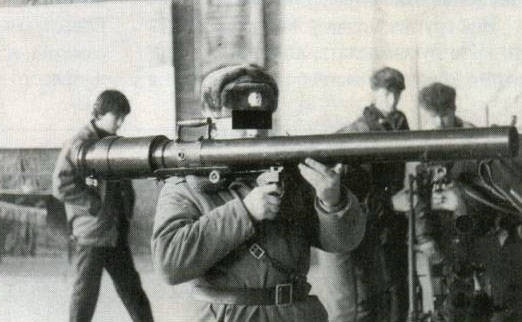
Behind and to the right of us in a continuous stream with a distance of 20 - 30 meters (in order to achieve minimal losses from the breaks of our artillery shells) "spirits" accumulate at a height of 2180, where the recoilless and heavy machine guns are firing at the 2 company. Over the entire subsequent period of stay in Afghanistan (26 months), I have never seen such a large number of Mujahideen ...
The enemy, blocking 1 and 2 companies with fire, pulling up reserves from Pakistani camps, penetrated deep into the fortified area, cutting off our escape route. Less than in 2 hours of battle, there was a catastrophic shortage of small arms ammunition (we took 800 - 1200 rounds of ammunition for the barrel).
The explanation of this "big invasion" mujahideen gave radiorazvedchiki, intercepting radio transmissions that the area of the fight from the center of training militants ISOA was transported by road Regiment Sayyaf - personal guard leader of the opposition party - in the number 360 people and fighting groups of Mujahideen are in border areas The task was to block the command post and the armored group.
As was to be expected, the “spirits” completely surrounded the 2 company and, having connected all the rest of our subunits with a firefight, went to storm the positions of the company “from the top down” with the fire support of the attack with the “Basic” strong point. For some time, the enemy was restrained by the fire of the mortar and the machine gun of the DShK from the standpoint of the 3 and 1 of the mouth, but the stock of mines was exhausted, and in the DShK the barrel was torn from overheating. Part of the forces of the 3 Company came to the aid of the company, but the group under the command of the Deputy Commander of the detachment, Captain Vasily F., managed to get through to the 2 Company only in the evening.
The Mujahideen never succeeded in seizing the positions of the 2 Company. Realizing the futility of their efforts, they concentrated all the main forces on the 1-th company, realizing where the disastrous artillery fire is being corrected and with the capture of which all our units in the SD would be in a fire bag.
We must pay tribute to the tactical art of the enemy - they counterattack them professionally. But the Mujahideen did not take into account one thing - professionals fought against them no worse. Possessing a significant superiority in manpower, but suffering heavy losses from artillery fire, the “spirits” acted according to their classic tactics — they “took us by the belt” (they moved closer to a distance that did not allow us to use artillery for security reasons). the defeat of the enemy, which I call “eating the cake” - by breaking up our battle formations, by sequential concentration of efforts destroyed the centers of resistance just as the cake that was previously cut into small pieces was eaten. Moreover, when the "spirits" failed to swallow the first piece of the cake - the 2 company, they began the second - the company 1.
My group was separated from the opposition militants by a little more than fifty meters, since the breaks in our hand fragmentation grenades “hampered” us closer to the enemy. The intensity of the Mujahideen fire was so high that we, being above the enemy, were unable even for a moment to look out of the ATP literally melting before our eyes (good enough fortified by this time) - it is this intensity of fire that precedes the attack roll. Waiting for the attack of the enemy, being under dagger crossfire, I tried to provoke artillery fire "at myself" with the start of the attack, conducting radio communications about this with the commander of the artillery battery, but the commander of the detachment went on the air and forbade to do it, after which we left the last manual A grenade in every ATP for a well-known case — there was no one who wanted to get into the clutches of the “spirits”. It was during these critical moments that “Stalin's falcons” appeared in the sky - this is how the commander of the 500 squad, Major Gregory B. “Cobra”, dubbed helicopter pilots at that moment - and this was the most flattering epithet at the moment ...
We have not learned the truth about the more than three-hour delay of helicopters, with a twenty-minute flight time from the home airfield (a / p Jalalabad). Among the many reasons given to us were such absurdities as non-flying weather — with a clear day and a late preparation of breakfast in the flight canteen — which sometimes happened to helicopter pilots, but the delay did not exceed one hour in such cases. Helicopter pilots rescued us dozens of times, thanks to their sniper attacks with guided missiles “Storm” was captured two months earlier by the UR “Goshta”, but what happened on March 29 of 1986 for most of us remained a mystery.
The helicopters appeared at the maximum flight altitude, and after listening to our reproaches, they asked us to identify ourselves with signal smoke and rockets, but they couldn’t notice them from a height of more than 3000 meters, but flatly refused to descend to a lower altitude. Helicopters entered the combat course almost vertically and, having made one or two volleys from cannons or NURS (unguided rockets), again soared up to the maximum height. Whatever it was, but with the advent of helicopters, the "spirits" stopped the intense shelling of our positions.
After making sure that today there is no need to wait for the necessary fire support from the air, we and the head of the reconnaissance unit decided to withdraw to reunite with the 1 group, since the enemy was already wedged between our groups and the 2 group was threatened with complete encirclement.
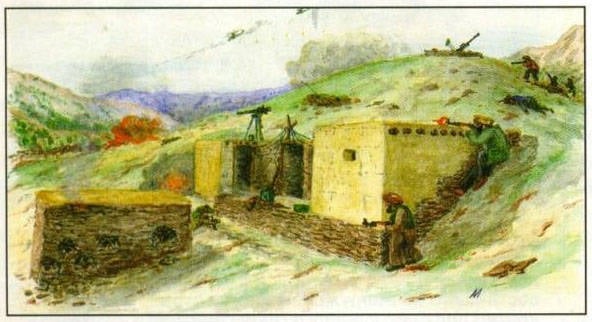
By this time in my group were two injured, but they could move independently. We understood perfectly well that after the helicopters had flown away, the “spirits” would deal with us in a few minutes, although there was no chance left without a loss. After making a roll call and determining the order of departure, we began to pull the wounded Shagarov and Moskvinov, who were located lower than the others on the slope, onto us. We covered the wounded with fire and orange signal smoke, but there was a delay with Moskvinov - to retreat under enemy fire, despite the words of the order and even the threats of those whose departure he clearly delayed, - Dmitry categorically refused, his last words: “Move away - I will cover "... To linger was dangerous - every second decided the fate of the whole group. Departing one at a time and covering each other, we focused on the uncatchable pinnacle of the summit, only the ordinary Buza and Moskvinov were absent. Aleksandr Buza was struck down by an automatic burst, barely rising after me from the SPS, and the long burst from the machine gun that remained with Moskvinov was broken by the tear of a grenade ...
Posted to see what was missing, junior sergeant Wojciechowski was met with “spiritual” bursts from a distance of 20 - 30 meters, barely having time to roll back behind the stone.
The whole group stared at me in silence: “What are we going to do, commander?” I explain to the soldiers as shorter as possible that they could hear the shouts of teams a few dozen meters away and, by prior arrangement, the whole group rushed to the “communications center” where that time, the chief of intelligence and private Egorov had to depart and warn the 1 group about our withdrawal.
After the break of our grenades, the “spirits” jumped to the top of the hill, when we overcame the greater half of the way. Their gunfire only made us dodge, as there was nowhere to hide from bullets on the grassy slope of the ridge. A few dozen meters from the final point of the withdrawal route, the enemy opens fire on us to the right - the “spirits” managed to wedge in between our groups, knocking part of the 1 group from the slide, which it occupied early in the morning.
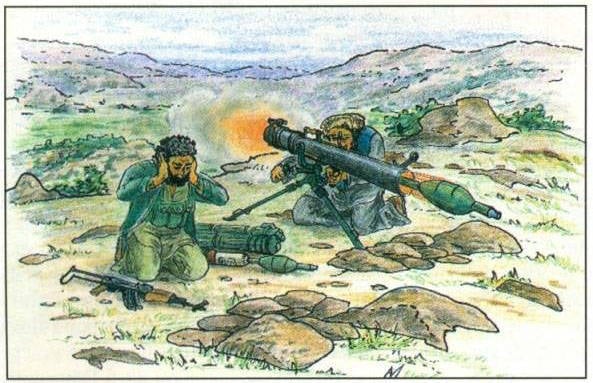
More and more "fountains" and "scratches" appear on the ground in front of my feet, it starts to seem like you are running too fast, I risk attacking bullets and ... falling down, pretending to be killed. The idea of pretending to be killed came unexpectedly, as if a voice from above, but I do not recommend anyone to do such a trick once again, because in a battle against a battled enemy, the majority makes a control shot. Wojciechowski falls just behind me, managing to squeeze into a small ravine, which I did not even notice, and asked in a whisper whether I was alive. Instead of answering, I jump up and run to the shed, because of which Private Kirilov is covering us. Having run up the hill, I tumble into the barn and, having stumbled at the entrance, fall with my hands on the dung bedding, they run after me. Our attempt to look out of the barn and cover up the waste of the rest of the group causes the Mujahideen’s intense fire to not return to their previous positions, but even taking them with a fight, we will lose several more people, and without having enough ammunition, the whole group will die. as the only way of withdrawal will be cut off ... "Buzu and Moskvinov, who will live, we will pick up at night," I conclude at the end. After my words, who still had the hand fragmental grenades left them at the "spirits", at the entrance of the barn. I cannot get in touch with Wojciechowski - he broke the radio station with exhausted batteries and threw it into the ATP before leaving “as an extra load”. Looking out of the shed for a second, we cannot find anyone, but the sounds of the battle can be heard that the "spirits" are firing only at us, and the shooting from Wojciechowski is heard much lower down the slope. I look around the barn: the walls of more than half a meter thickness are made of flat crushed stones, they will withstand not only the RPG-7 grenades, but also the recoilless cannon — I make a loud conclusion at the end of the inspection. In confirmation of my words, several minutes later, four breaks are heard from the outside, after which gaps appear in the wall, and a clay plaster of the ceiling falls on us. At this, the shelling of the shed ceases for some time, and the “spirits” carry off the recoilless fire on the ATP, equipped with the first group around the “communications center”. After a direct hit of a projectile into one of the structures, a company interpreter, Senior Lieutenant Rozikov, and a radio telephonist, Private Yakut, perish, and a bit later, Fatal Viktor Einoris, who is fatally wounded in the stomach. Not being able to resist the fire of recoilless guns, the 1-I group part of the forces retreats to the cliff below. During a retreat, private Yegorov dies, trying to cover his comrades with smoke ...
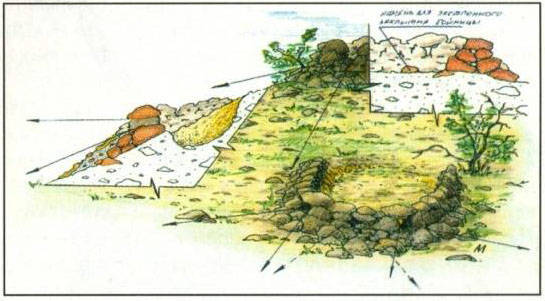
The Dukhovskoye SPS, which I adapted in the morning for my KNP, most likely was a prepared position of the BO-82, and the gun and ammunition were probably located in one of the buildings that we discovered with the dawn not far from their positions. After moving part of the 1 group to the cliff, the “spirits” again opened fire on our shed, and I propose to change the shelter by running to the caves located higher on the slope, from which we are separated by a terrace platform with a height of more than one meter. My decision is risky, as the enemy shoots out of the shed with 30 - 40 meters, which, having no inspection holes (loopholes), does not allow to determine the exact location of the "spirits", which, as it turned out, occupied part of the shelters left by the first group. The first to try to break through to the caves I decide myself. When overcoming the terrace ledge, a cloud of dust and sand being pounded by bullets and the roar of a machine gun overhead cause paralyzing horror — above the entrance to the cave there is a full-length "spirit" and shoots me, firing from the machine gun from the belt. Having released a continuous burst of 10-15 bullets, he abruptly sits down, and I, tearing my whole body off the ground, literally flies into the cave. Later I learned that the “insolent spirit”, who had risen to his full height, was shot with a well-aimed shot by our sniper from the side of the skalnik. Once in the cave, I shout to my fighters to stay in the barn and not jerk anywhere, since there are “spirits” above the caves.
My new refuge is a narrow cave expanding to a depth of one and a half meters and a length of up to four meters, a cave, partitioned off with an iron cabinet safe, having a height of just over one and a half meters. The floor of the cave is covered with a parachute canopy of an aerial bomb, on which packages with medicines, telephone cable hanks, small rechargeable batteries are scattered, and about thirty 107-mm PCs are stacked in a side niche. Missiles - having batteries and wires - could be successfully applied according to “spirits”, we prepare ourselves for defense, not for evacuation by helicopters ...
After examining myself from head to toe, I discovered the loss of a combat knife, a signal pistol and a radio station antenna (instead of the last a piece of broken rope dangles), and also counted three bullet ripped holes in uniforms and equipment. Instead of an antenna, I insert a piece of cable picked up on the floor, wedging it in the antenna socket with a bullet of a caliber 5,45 mm (when I take a bullet, I only have 14 cartridges in a single store). With a bandage found in the closet, I tie up the bullet of the eyes that has fallen off after hitting a fragment of the eye — a tight bandage relieves the pain that is especially sharp at the moment of blinking. Rummaging in the closet, in search of a bandage, I found several packs of 7,62-mm assault rifles from China and once again became convinced of the great popularity of the 7,62-millimeter Kalashnikov among the military units of the 40 Army. After this battle “to the war” I went only with AKMS, using mostly captured ammunition with an armor-piercing incendiary bullet, which we called “explosive”.
Having revived my radio station, I listen to the radio broadcast by several more powerful radio stations than me - I try to contact the company or squad commander, but my attempt to communicate about myself and the group even with the help of the “antenna” thrown outside does not lead to anything - the village is powered by a radio station, but for some time it still works at the reception.

In the afternoon, the Mujahideen, unable to capture the “communications center”, pulled up heavy weapons and brought down a barrage of recoilless guns and mortars at our positions, depriving us of the possibility of active resistance. At that time, the Rooks appeared in the sky - Su-25 attack aircraft and MiG-23 air defense cover aircraft (after the appearance of the Puma patrol helicopter, the appearance aviation Air defense of Pakistan and the war zone). Now, to the "spiritual" cannonade, explosive bombs were added, which pilots masterfully placed two to three hundred meters from our positions. Air raids were replaced by artillery fire of the D-30 battalion and the Grad battery of the 66th separate motorized rifle brigade, which arrived on alert in the war zone after the radio interception of talks by the Mujahideen about their decision to “destroy all unfaithful dogs”.
The constant rumble of breaks, the expectation of assault by our shelters by the mojaheds who approached the grenade range and the absence of any chances for active counteraction - causes fear that cools the soul, forcing you to think only of easy death (turn in "spirits" and ...). I do not know what other people feel at such moments, but I, tired of fear, began to feel more than fear, anger and resentment at the same time, but this is a separate topic concerning the psychology of extreme situations.
At 16.00, my solitude was interrupted by Private Aliyev, who rushed in from a nearby cave, and Sergey Kosichkin, mortally wounded, burst in after him. The fighters who remained in the barn, after the “spirits” began monotonously pounding on him from the boxless, the four of us (!) Rushed to the caves, but only Kirillov, who was running first, rushed to them; and the fourth — Private Reutov — returned to the barn. We picked up the bodies of the dead children after dark, and there were five bullet holes in the SVD, which belonged to Podolyan - the “spirits” shot the rifle, unable to pick it up.
Until the night, having no information about the death of Yegorov, Podolyan, Velikiy and our other losses (the radio station finally “faded out”), I was most worried about the fate of that part of my group that remained with Wojciechowski. Caught in crossfire, the squad commander crawled along the ravine to a shrub located down the slope, after which the fighting group made its way to the 3-th company, observing how the “spirits” were shot from the shed without tramings, Wojciechowski concluded that we died, this was reported to the commander of the 3 company, after which the fate of the mojaheds taken prisoner in the morning was solved in a known way ...
For more than a ten-hour battle, the Mujahideen only slightly managed to press the 1 and 2 companies. Not having achieved tactical success, the fire of their heavy, and then small arms gradually subsided - apparently, the opposition fighters did not have enough forces, means or time to take more decisive actions.
With the onset of darkness, having established sound contact (reshaping) between us, we began, observing precautions, to leave our shelters, at this moment from the trench where ZPU was standing, the sky was drawn by a long automatic turn of tracer bullets - we were ready to repel the attack, but rather it was all a signal of departure. Mujahideen, for religious and technical reasons, with very few exceptions, did not fight at night.
A few minutes later, a group of 3 companies approached us, after which the brigade commander decided to evacuate the dead (seven people) and injured 1 and companies to the village of Mamund, where the 500 squad had approached, then search with him missing
Not having enough personnel to evacuate the wounded and dead, the latter had to be dragged along the slope until one of the companies of the 500 squad came out to meet us. During the gathering and evacuation of the dead, the coldness of the dead bodies struck me most of all, with relatively warm weather, my hands were cold when we alternately dragged the dead down one by one ... 1-, losing strength, suffering from thirst, 2 March and 30 Company and I, by dawn, evacuated all the wounded and dead outside the fortified area to a safe landing site for helicopters.
The personnel of the assault-assault battalion of the 66 th OMSBr landed from helicopters, with sympathy and, it seems, looked with fear at the eight men who were covered with bloodied cloaks and on the group of people preparing for evacuation of the wounded in torn and covered with blood. We shared with the DSB officers information about the enemy, expressing a number of wishes and advice on how best to organize the defense, since the battalion was tasked with blocking Spynatsuk ridge.
After the evacuation of the wounded and the dead, our and the second company were transferred by helicopters to the KP area, where we were set between the interrogation and the brainwashing, which meant that we and only we were responsible for what happened (?) ...
For the next two days, the enemy did not take active actions. By the end of March 30, the seriously injured Lieutenant Dmitry A. who was considered missing was discovered, and the ordinary 3 of the company, hiding with him in a rock crevice. The search for the missing Moskvinov and Buzy did not bring any results - the “spirits” dragged off their corpses.
A few months later, the militants had completely restored the base Karera fortified area. Through an intelligence source, it was established that the Mujahideen lost more than a hundred people killed and missing, “the corpses were loaded into three large trucks”. The same source reported that the dead bodies of Moskvinov and Buza's “spirits” were carried to the nearest Pakistani village, where Rasul Sayaf arrived with several Europeans. Due to the protest of local residents, the bodies of Soviet soldiers were allegedly assigned to the place where they were picked up and then covered with stones. I tried to solve the problem of the reburial of the remains in 1991, but was refused to hold such an event by the counterintelligence agencies.
During the raid on the Karera 29 March, March 1986, our total losses were: eight people dead, two missing and about twenty people wounded, six of whom never returned to service (Lieutenant Colonel Anatoly Petunin died from a wound in 1989 year during the next operation).
Losses of this magnitude for the Soviet special forces in Afghanistan were extremely rare - due to the excellent preparedness of personnel, careful planning and skillful leadership of military operations. As was to be expected, organizational conclusions followed immediately. The special forces were now forbidden to conduct raids on fortified areas, to conduct combat operations in a fifteen-kilometer frontier zone, and all decisions for raid were asserted only by the headquarters of the 40-th All-Arms Army. The result of the raid on the UR "Karera" was the unfair, according to most officers, dismissal from the post of brigade commander, as well as the punishment of all officers who participated in the operation (with the exception of the dead and wounded) in the form of returning submissions to government awards. Just as in Sergey Kozlov’s article “The price of a mortar” (“Soldier of Fortune” No. 12, 1995), it seems that no one even scolded the helicopter pilots - “they had no losses”.
Analyzing the described combat operation hundreds of times, I come to a conclusion - if we knew in advance about the delay of helicopters, companies could prepare well for defense using captured weapons and ammunition, knowing that “Kunar spirits”, having Pakistan at their side, would go to the counter attack .
Russia, which wants to have high-performance units and special-purpose units, and ideally troops as an independent type of armed forces, follows the example of most states to take care of equipping these troops with their own helicopters in order to rule out the possibility of repetition of special operations disrupted due to “departmental” disunity, such examples in our newest stories more than enough.
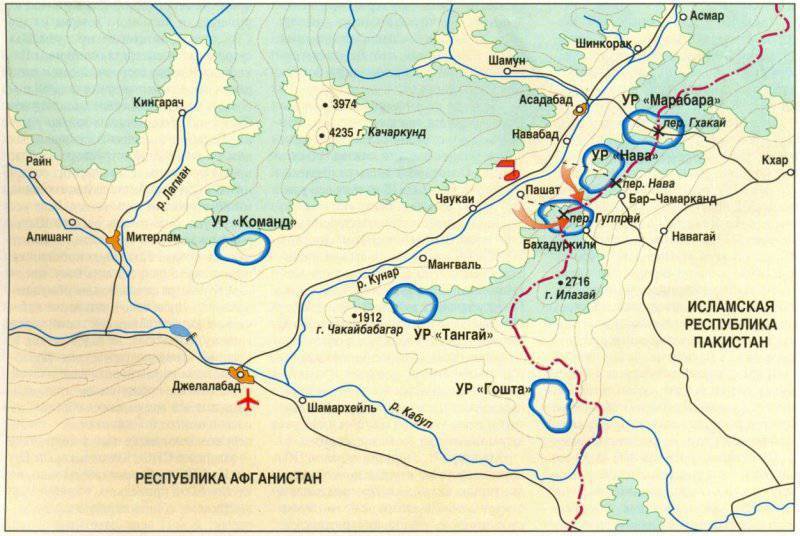
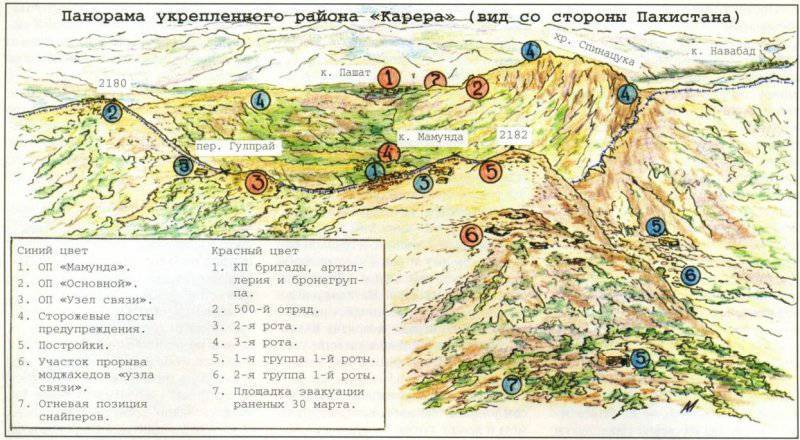
Information